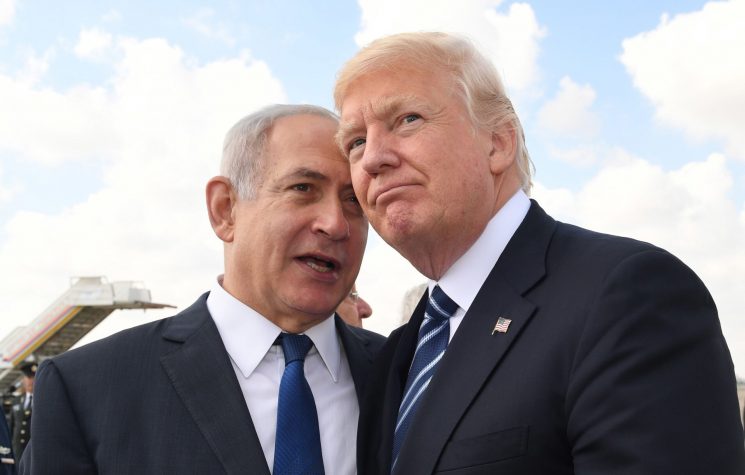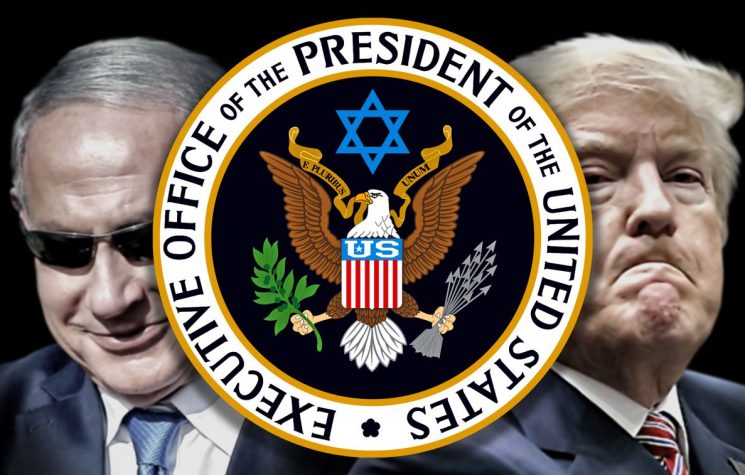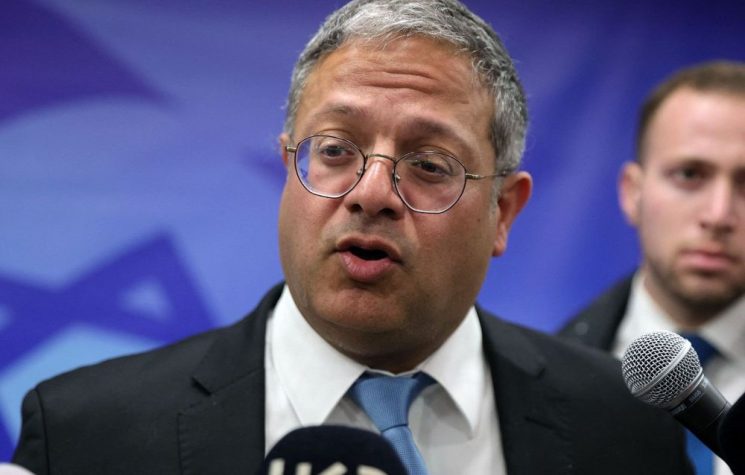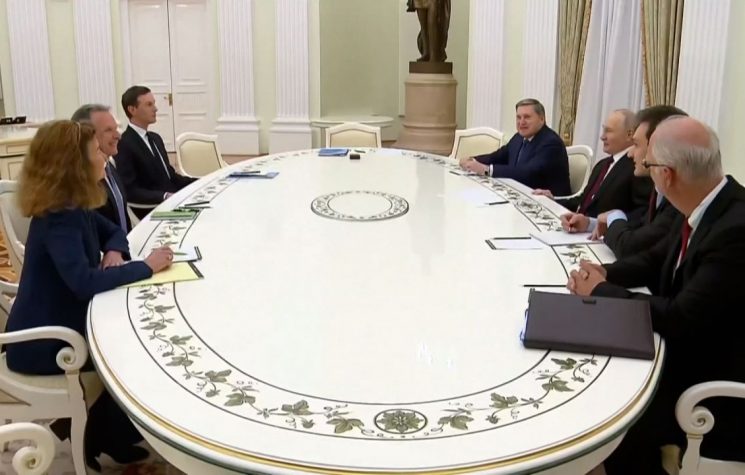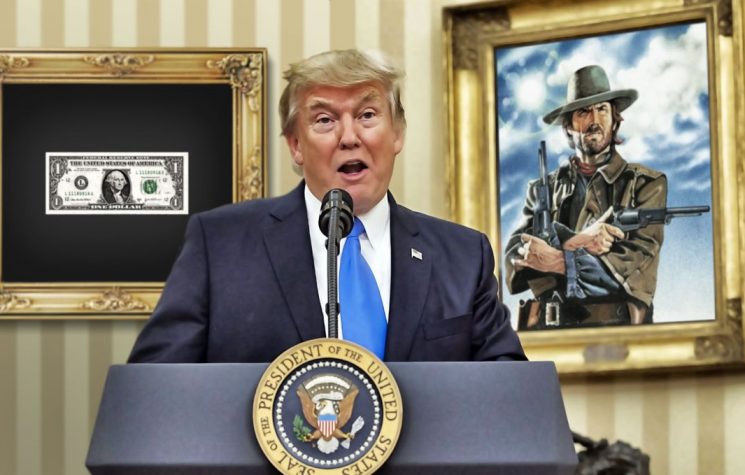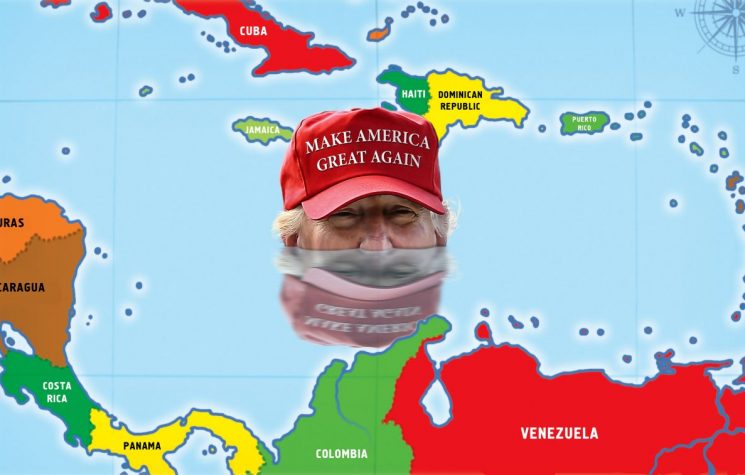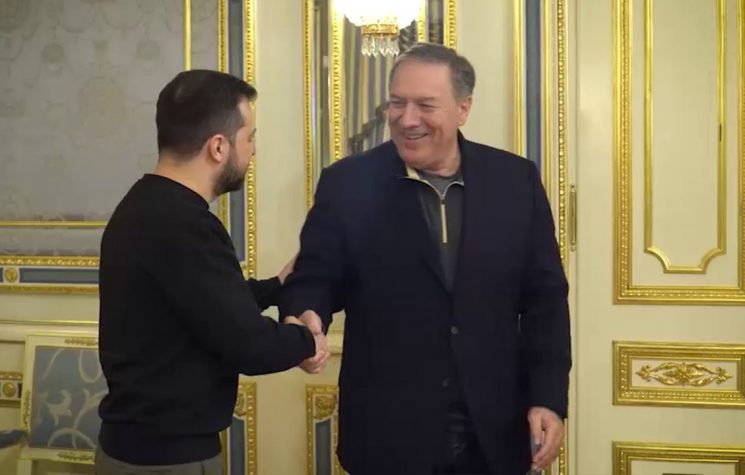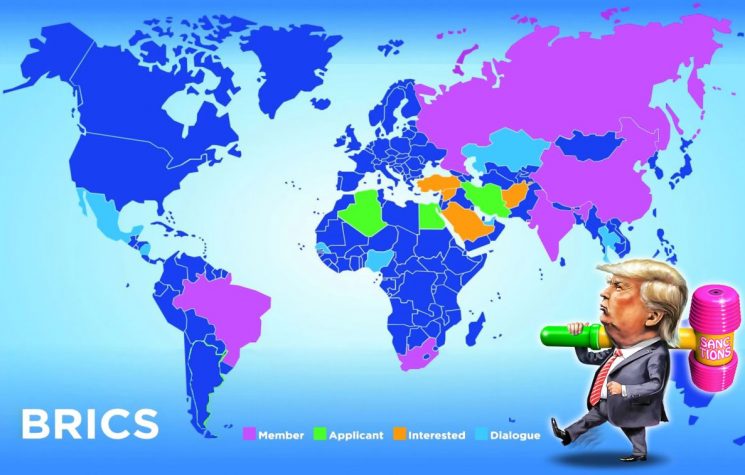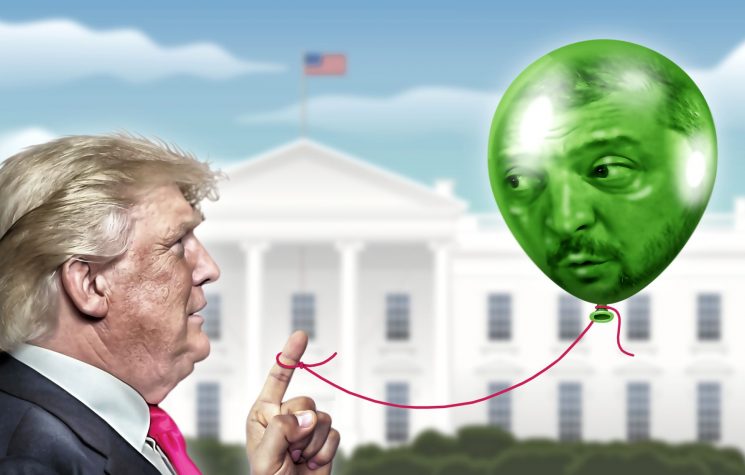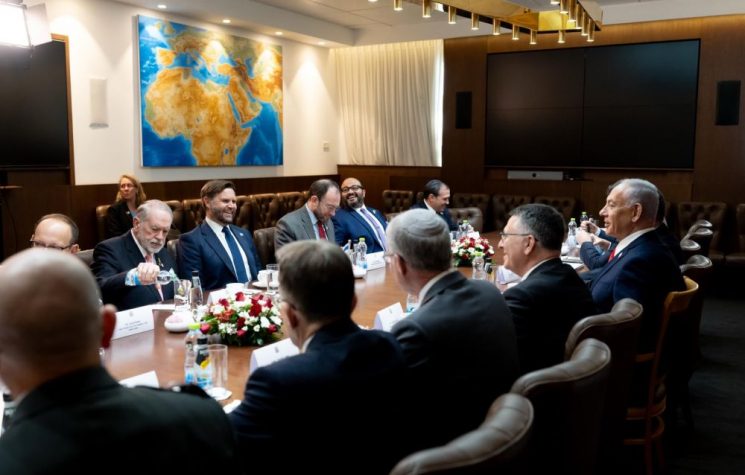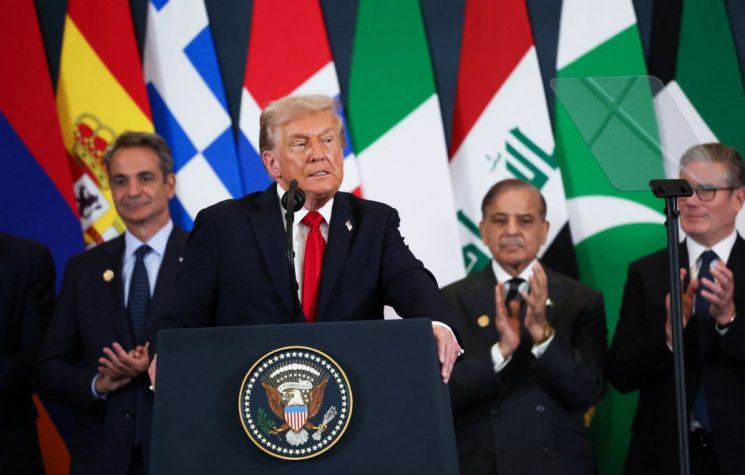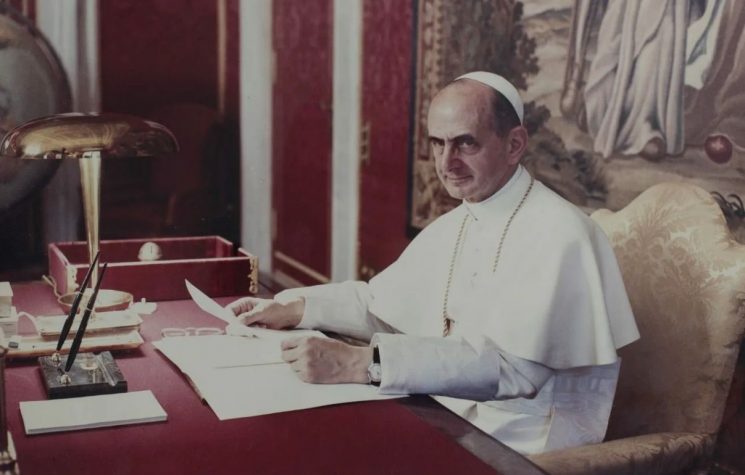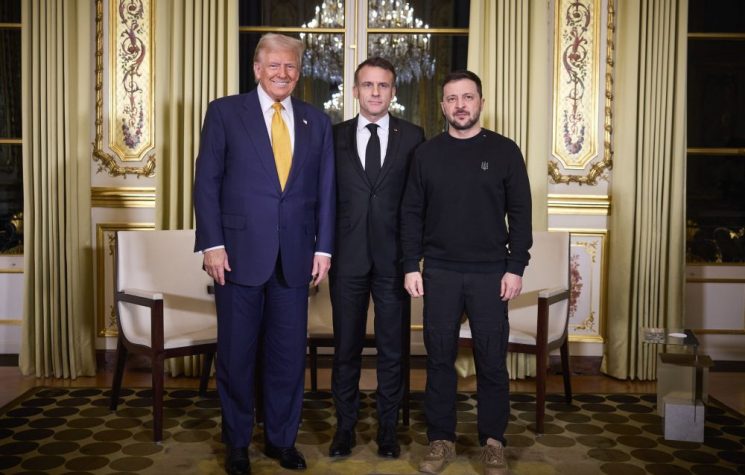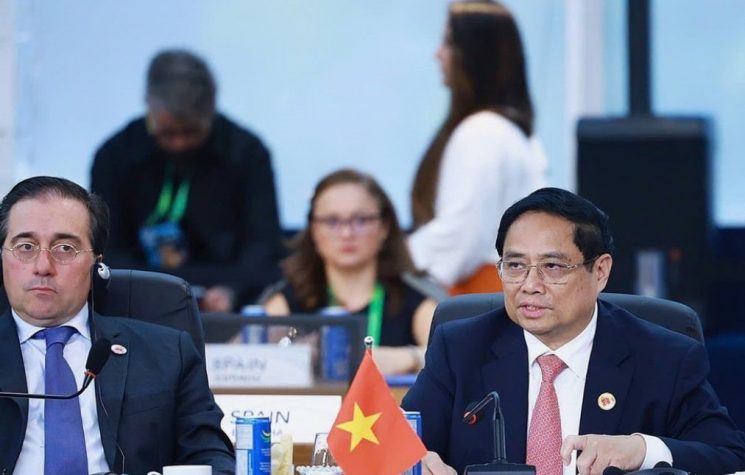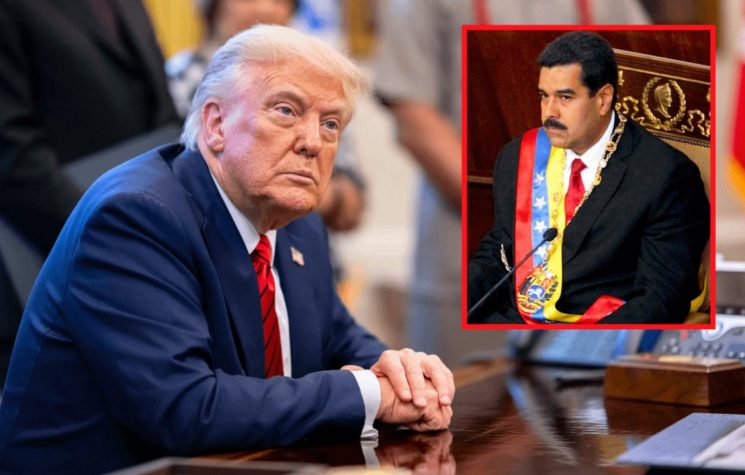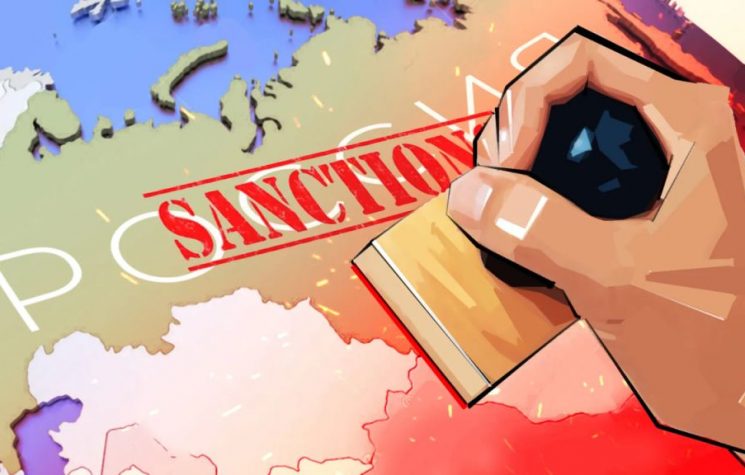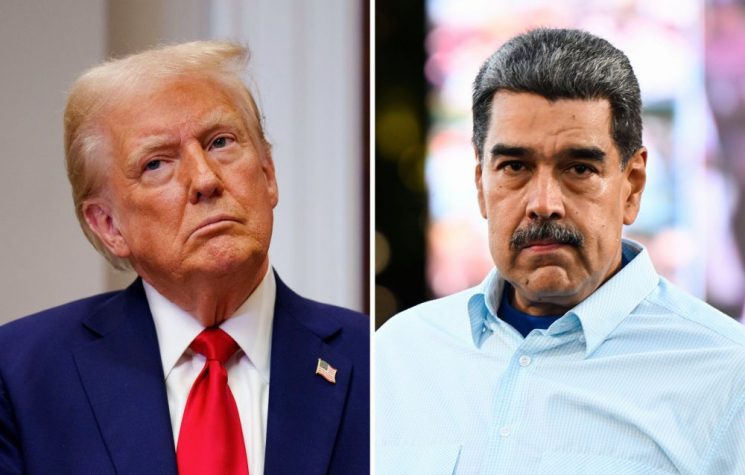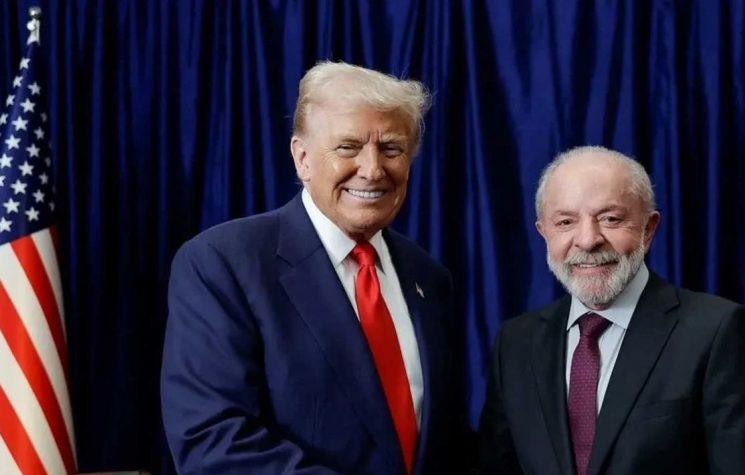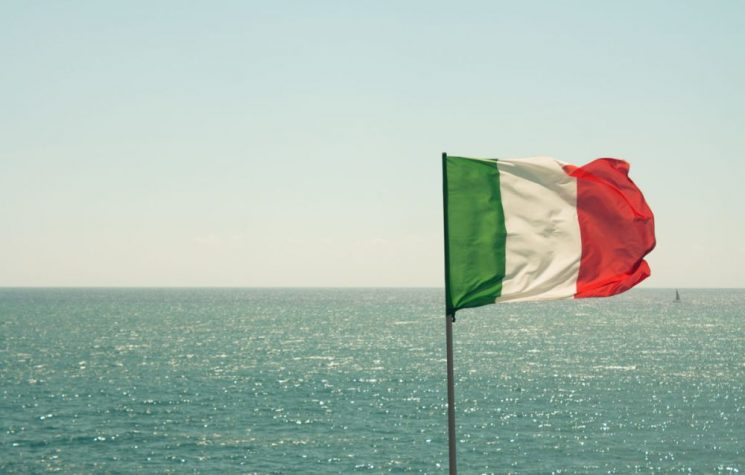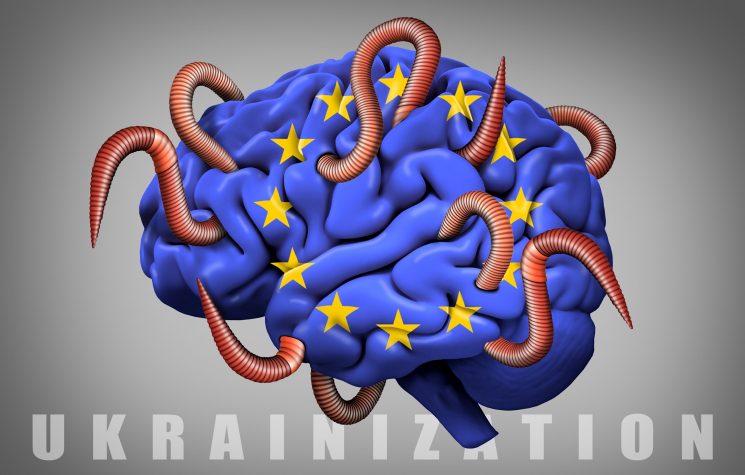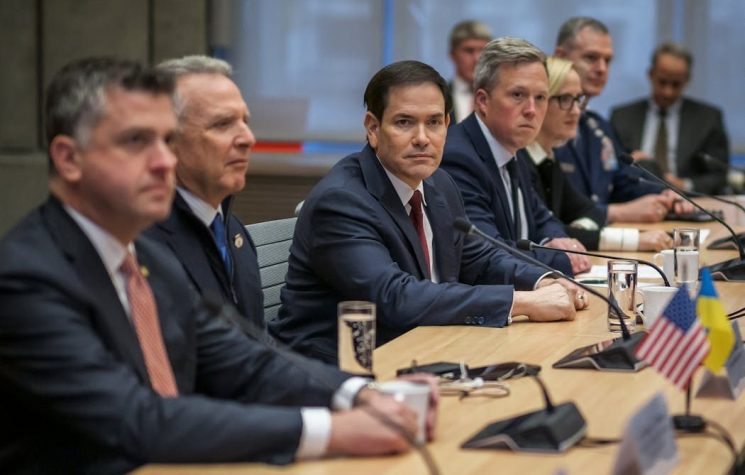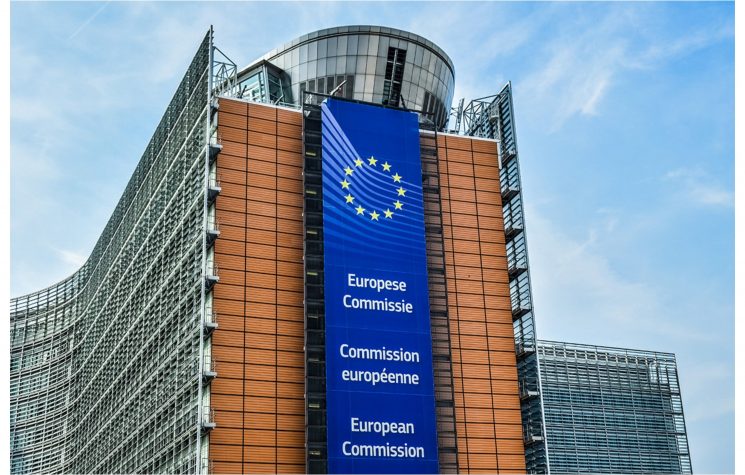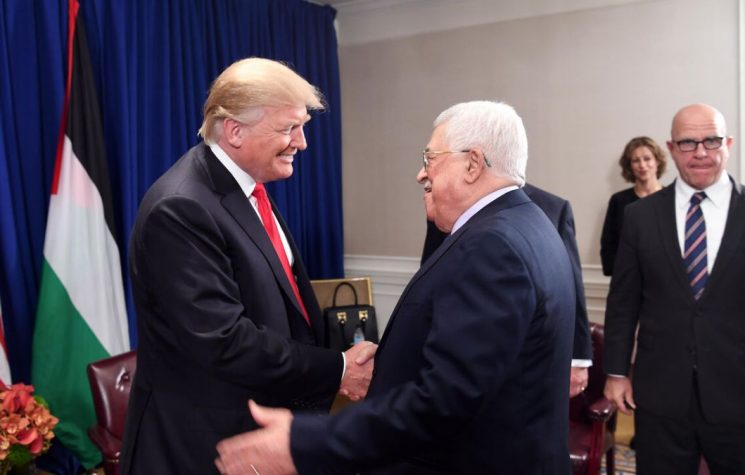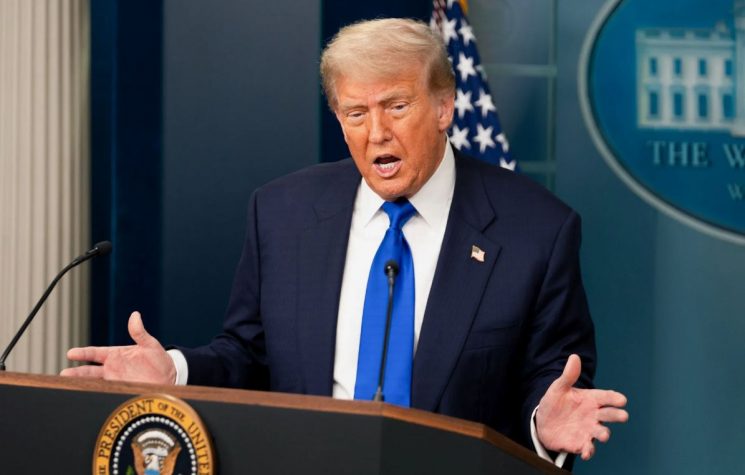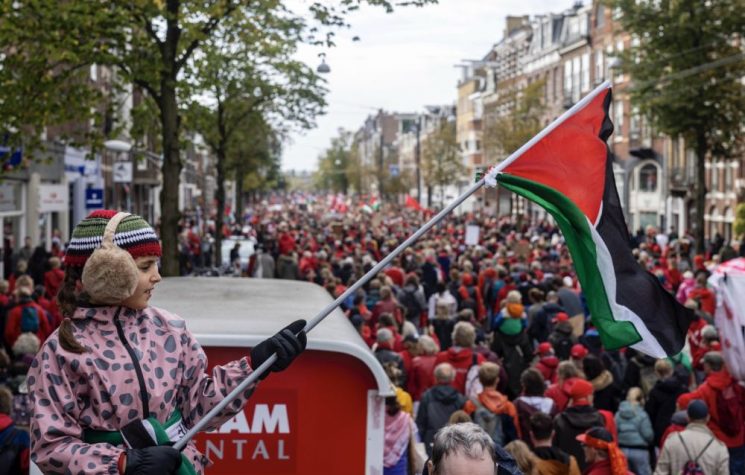Netanyahu may yet call it diplomacy, but the world saw something else: a man reduced from an arrogant boaster of his control over the American president, to that president’s water boy.
Join us on Telegram![]() , Twitter
, Twitter![]() , and VK
, and VK![]() .
.
Contact us: info@strategic-culture.su
What unfolded this weekend between Donald Trump and Benjamin Netanyahu was as much a tremendously needed diplomatic breakthrough to end Israel’s war of aggression upon the people of Palestine, as it was a public display of hierarchy; a master-servant dynamic disguised as an agreement so stunning that even the New York Times was forced to frame it this way. They did so in their news analysis piece by Isabel Kershner from Jerusalem on October 5th, “Strong-Armed by Trump, Netanyahu Embraces Gaza Deal as a Personal Win – Prime Minister Benjamin Netanyahu of Israel took credit for an emerging agreement, but it was clear that President Trump was calling the shots”, despite that the piece introduces some critically erroneous propaganda. What is clear, however, is that Netanyahu’s war policy for Gaza effectively experienced a coup at the hands of Trump.

Gaza cleanup and reconstruction begins as Egypt sends a brigade of bulldozers to begin clearing rubble in Gaza, seen here entering through Rafah – credit video frame shot from Russia Today
At the same time, there is great danger that Netanyahu will attempt to regroup his efforts, and derail the peace process using various mechanisms which he’s known for historically. After all, what might keep Netanyahu from pushing back on what appears very much as a Trump led coup within the Israeli right against Netanyahu’s policy of ethnically cleansing Palestine of its indigenous population?
Nevertheless it remains now that it was Trump, not Netanyahu, who dictated the terms of what now appears to be the final framework for ending Israel’s war upon Gazans, releasing the remaining hostages held by Hamas, and establishing the security and reconstruction framework along the lines of the Arab League proposal from Egypt last March. The episode demonstrated to Israelis, Palestinians, and even the wider region that Netanyahu’s role was no longer that of a sovereign leader, but of a client forced to submit to his benefactor’s will.
This was also a much needed change in the narrative arc for much of Trump’s base at home in regards to the Netanyahu relationship, who unlike past generations of neoconservative voters, are instead quite against the ‘forever wars for Israel’ as the Washington Post reported. This was change greatly urged by American pundits such as Tucker Carlson. Carlson, who for his part, urged for Trump to cleanly ‘separate’ from Netanyahu, who had been going around the world and the region, and within Israel, saying, “I control the United States, I control Trump”. What a reversal, indeed.
Netanyahu’s televised statement on Saturday was, to the careful observer, a performance of damage control. He claimed that the hostage release and cease-fire proposal was the fruit of his own weeks of coordination with Trump’s team, as though he were an equal partner in a joint diplomatic success. But the illusion collapsed almost immediately. Trump, in a characteristically brash conversation with Israeli media, portrayed himself as the one giving orders. “He’s got to be fine with it,” Trump said of Netanyahu. “He has no choice. With me, you got to be fine.” The message was unmistakable: Netanyahu had been strong-armed, cornered, and stripped of agency.
In Israel, the humiliation was palpable. Prominent commentator Nahum Barnea declared bluntly, “He’s the boss,” referring to Trump, (not Netanyahu). The phrase captured the new political physics where Trump could no longer be cast as a willing accomplice to Netanyahu’s war machine, but a commanding authority shaping Israeli actions in real time away from the Gaza occupation and towards a solution agreed to by Hamas and Arab powers. Trump’s ultimatum to Hamas on Friday and his immediate acceptance of their full compliance revealed that the war’s tempo, its narrative, and even its conclusion now ran through Washington, or more precisely, through Trump himself. The above cited New York Times piece, however, inserted a fallacious caveat in-line with Zionist talking points from Netanyahu’s desk itself, that Hamas had only ‘partially’ agreed to, or rather actually disagreed with Trump. The evidence of this point is flimsy, and is countered by Trump’s direct reproduction of the letter from Hamas to Trump on his Truth social account.
By Saturday, Israelis learned through Trump’s own social media post, not from their government, that Israel had already agreed to an initial withdrawal line in Gaza as part of the deal’s first stage. The arrangement would see the release of 20 living hostages and the return of 28 bodies in exchange for 250 Palestinian prisoners serving life sentences, along with hundreds of other detainees. Trump went further, announcing that once Hamas signed on, a cease-fire would “IMMEDIATELY” take effect. Netanyahu was left with the role of confirming decisions already made by another man.
For months, Netanyahu’s political existence had depended on juggling impossible contradictions: promising his far-right coalition “total victory” over Hamas, fending off international condemnation for Gaza’s devastation, and keeping his own head above the rising waters of political survival. But now, his leverage with Trump, the last global figure willing to treat him as indispensable, has run dry. As Israeli pollster Mitchell Barak put it, as quoted in the NYT piece:
“It doesn’t look like Hamas is leaving, and it doesn’t look like the total victory he [Netanyahu] promised. I think he realized his credit with Trump ran out. For first time Netanyahu cannot disregard the wishes of an American president, because of the way Trump operates. Trump is unpredictable and will not fall in line with the Israeli position.”
Netanyahu’s old pattern of defiance toward American presidents, perfected in his battles with Obama and Biden, (which is to say Obama, again) simply does not apply. Trump, though actually quite predictable, as this author predicted this power struggle would lead towards this end, is indeed transactional, and doesn’t negotiate indefinitely with non-agreement capable parties like Netanyahu and Likud. No, he works through them to neutralize them. The plan works through the plan.
Trump’s calculations extend far beyond Netanyahu’s standing in Jerusalem. The former president is openly balancing his relationship with Israel against partnerships in Ankara and Doha, both of which Netanyahu has antagonized. Erdogan’s Turkey, rhetorically hostile to Israel, and Qatar, accused by Netanyahu of harboring Hamas leaders, have now re-entered Trump’s orbit. This repositioning makes Netanyahu’s obedience not only political but existential: he is now the supplicant in a network he once dominated.
Only weeks earlier, Netanyahu had expanded the war, pushing the military to seize Gaza City in defiance of its own generals. The plan was sold as a necessary step toward eliminating Hamas. Now, under Trump’s pressure, that entire offensive has been halted. On Friday, Trump wrote: “Israel must immediately stop the bombing of Gaza, so that we can get the Hostages out safely and quickly!” Within a day, the Israeli military scaled back to “defensive operations,” a polite euphemism for standing down. Netanyahu’s doctrine, that Israel would negotiate only under fire, was shattered by a single Trump post.
Still trying to maintain an image of control, Netanyahu declared Israel was “on the verge of a very great achievement.” Yet the maps Trump released told a different story: Israel would withdraw from key corridors inside Gaza, notably the Netzarim Corridor, which it had only recently taken. This no doubt was a military retreat dressed up as tactical prudence and so for Netanyahu, this was another indignity layered atop the rest.
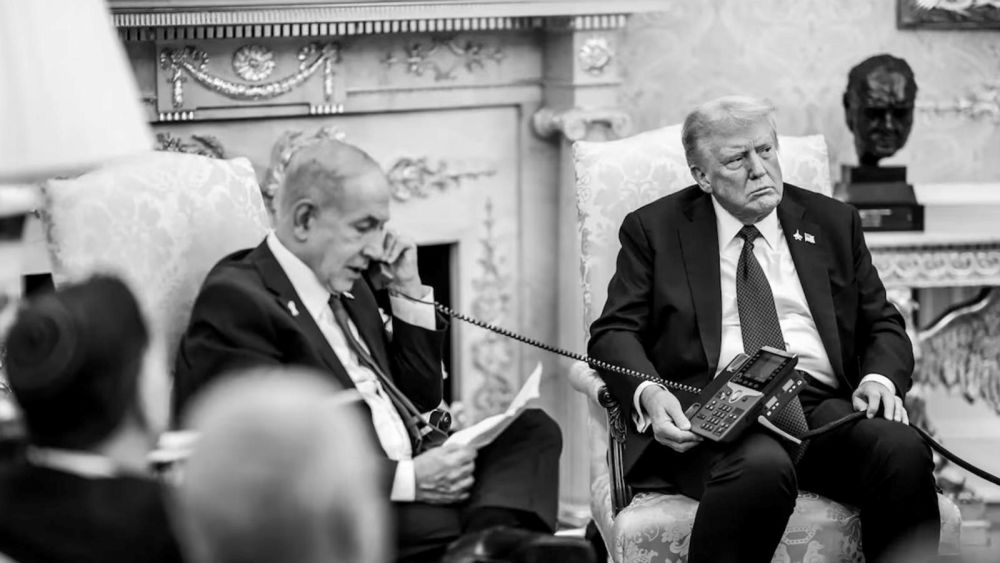
Trump holds the phone and forces Netanyahu to apologize to Qatar. Credit – White House
The episode’s most visually degrading moment came when Trump, treating Netanyahu as a subordinate, placed him on a speakerphone call with Qatar’s prime minister to deliver a formal apology for a botched Israeli assassination attempt in Doha. The White House distributed an image of Netanyahu reading the apology from prepared notes, while Trump sat scowling beside him, holding the phone. The optics were devastating. Israel’s longest-serving prime minister looked unlike like a statesman and more like an emissary summoned to read a dictated confession.
Trump’s team went further still, compelling Netanyahu to endorse a clause in the cease-fire deal that openly references a “credible pathway” to Palestinian statehood, the very outcome he has spent decades blocking. To Netanyahu’s far-right Zionist base, this is betrayal; to his racist settler electorate, it is capitulation. But he had no cards left. Trump had cornered him, outmaneuvered him, and made him swallow his life’s defining red line.
Israeli commentators have struggled to make sense of this spectacular reversal. Barak, Netanyahu’s onetime aide, said plainly, as quoted in the Kershner piece for NYT, “His entire career has been in a free fall in the last few days. He agreed to everything.” Even so, others caution against writing his obituary too soon. As Mazal Mualem, Netanyahu’s biographer, observed, he has survived political death before. “Bibi knows when to show restraint,” she said. Perhaps he calculates that accepting Trump’s domination today buys him space to regroup tomorrow.
But the larger truth is that this episode marks the public unmasking of Netanyahu’s dependence, and a reality many in Israel already sensed. Trump, ever the showman, forced it into the open. By dictating cease-fire terms, controlling Israel’s military tempo, choreographing Netanyahu’s apology to Qatar, and inserting statehood language into the deal, he demonstrated that Netanyahu’s claims of control over Trump was a myth. In fact, the opposite now appears true.
In this drama, humiliation took many forms: subordination, coercion, exposure, and ridicule. Netanyahu’s power was not just constrained, rather it was paraded as conditional. Trump’s message to all players, from Tel Aviv to Doha, was that even Israel’s once-untouchable leader now bends to his will. The psychological imprint of that spectacle may linger longer than any cease-fire.
How did Trump do it? Trump pulled this off very similarly to his strategy in-country in the first place. In the United States, Trump’s MAGA strategy historically involved repositioning himself within a Republican Party he had not fully inhabited. He appealed to right-wing, patriotic, veteran, and anti-forever-war constituencies from both the right and the left. By doing so, he was able to emerge from within the party to frustrate neoconservative influence and push much of the party, with the exception of a few powerful neocon senators, away from its traditional alignment with endless wars, Netanyahu’s cult of personality, transatlantic commitments, and rhetoric advocating military confrontation with China. This strategy could not have been executed from outside the Republican Party or from within the Democratic Party.
While the Democratic Party may appear to oppose neoconservatism and transatlanticism, Trump’s approach identified the actual levers of power and the practical limits in light of realpolitik.
A similar pattern appears in Israel. Enter MIGA, Make Israel Great Again. By presenting himself as a hardline pro-Israel Zionist, Trump gained the trust of right-wing elements within Israel’s intelligence, security, and military apparatuses. These actors increasingly recognized that Netanyahu’s approach is pushing Israel toward serious economic, military, and diplomatic risks. Instead of appealing from the left, to a small liberal readership such as Haaretz’s, or the Democrats (formerly Labor) Trump engaged the right-Zionist camp, the segment with the greatest influence over Israel’s political and security decision-making.
Before Trump, Netanyahu had successfully defined the possible future in two ways: support for the specific Likud view of Israel’s future, or be a part of Israel’s dying left/progressive opposition. After Trump, Netanyahu’s base is fractured, and it shows.
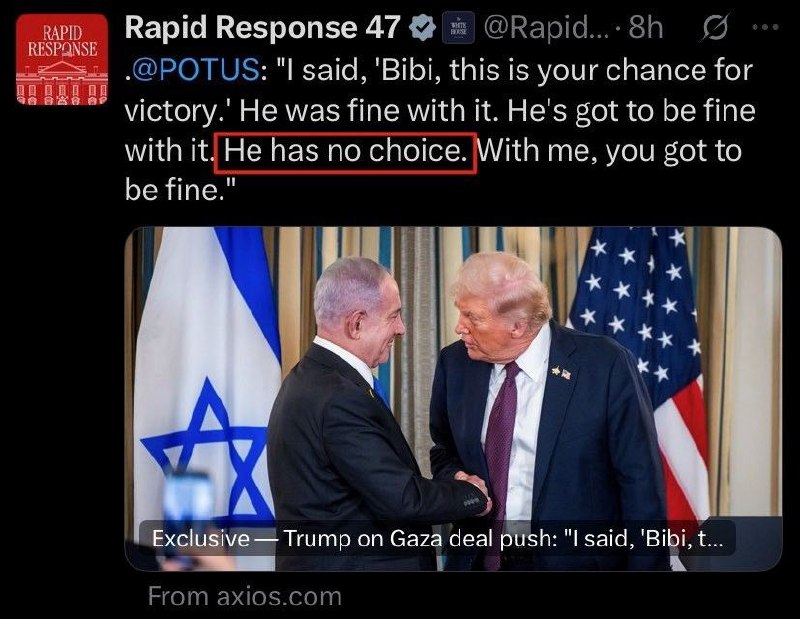
Trump in fact confirmed his strategy of inserting himself as a more reliable ‘MIGA’ figure within Israeli politics in his joint press conference with Netanyahu, after forcing him to sign the peace agreement on Gaza, an agreement which sees Netanyahu capitulate on almost every single one of his real objectives. Trump explained while looking right at Netanyahu, at the adjacent podium:
“They have large crowds gathering in Israel all the time and they have my name up. They like me for whatever reason, Bibi. I don’t know. But they do like me. But uh they say two things: ‘Please get the hostages back and please end the war’. They’ve had it.”
Netanyahu may yet call it diplomacy, but the world saw something else: a man reduced from an arrogant boaster of his control over the American president, to that president’s water boy, from commander to captive of his own dependency. And for Trump, that was the real victory, not just the first step towards the end of this genocidal war against Palestinian civilians, but the demonstration of who, at last, gives the orders.
Follow Joaquin on Telegram @NewResistance or on X/Twitter @XoaquinFlores










